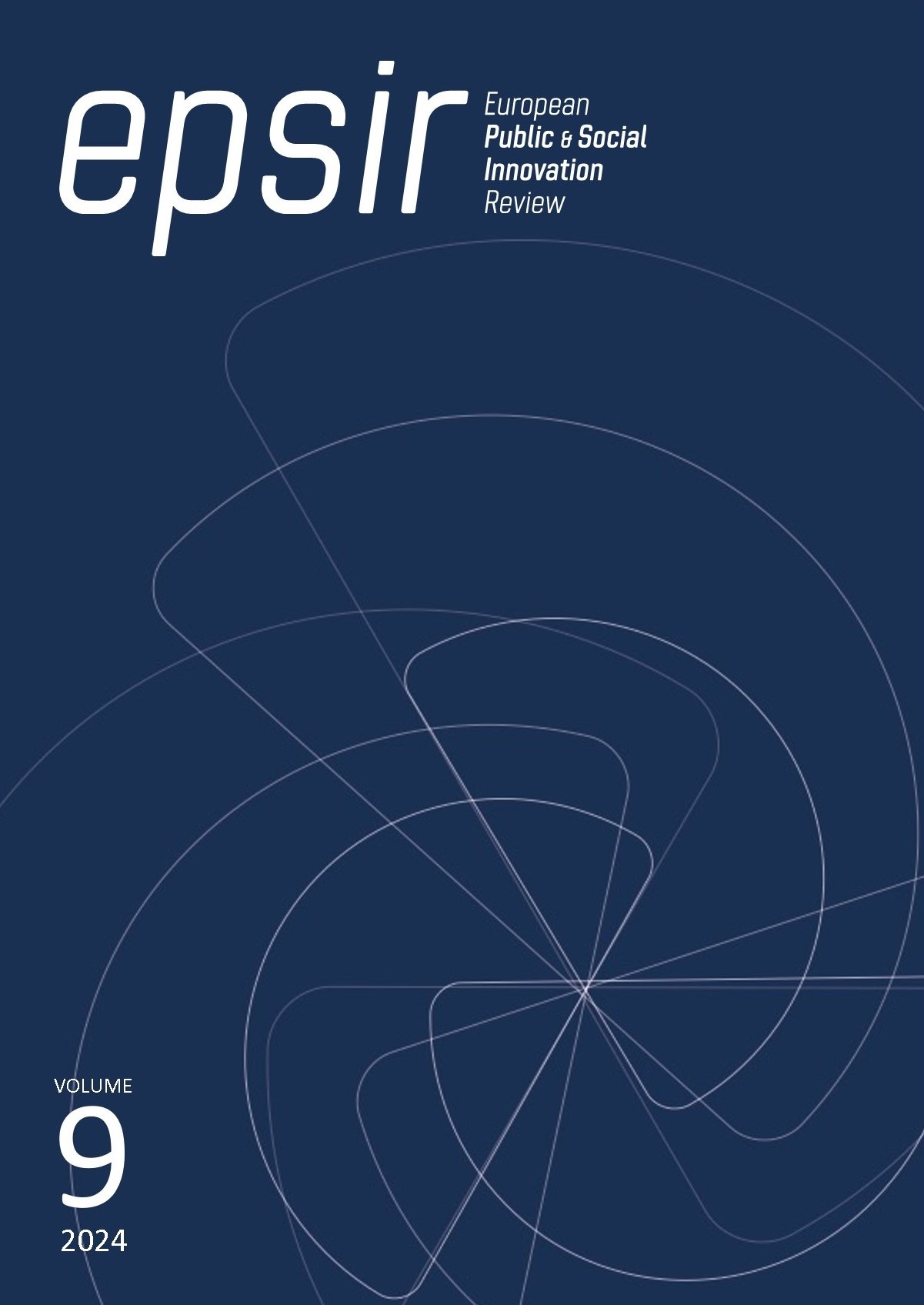Historias del arte de instalación: estrategias espaciales en los límites entre la arquitectura y el arte
DOI:
https://doi.org/10.31637/epsir-2024-686Parole chiave:
arte de instalación, taxonomía, espacio, manuales, site-specific, lugar, museo, arquitecturaAbstract
Introducción: El arte de instalación es el género más influyente del arte además de ser el único íntimamente ligado al espacio. Sorprendentemente, existe muy poca bibliografía con vocación de abarcar esta disciplina en su conjunto y solo dos de esos textos están organizados en categorías espaciales. Esta investigación propone una organización del conjunto de enfoques contenidos en los seis manuales principales de instalaciones, sintetizándolos en una taxonomía espacial unitaria. El objetivo principal de este estudio es avanzar en la sistematización del arte espacial como campo de estudio. Metodología: La metodología empleada responde a un estudio comparativo de las diversas fuentes primarias, seguido de un análisis sistemático de sus similitudes y diferencias. Resultados: El resultado es la propuesta de una taxonomía agrupada derivada de los dos manuales que se articulan en torno a categorías espaciales. Discusión: El artículo valora la capacidad, de la taxonomia propuesta, para acomodar las categorías instalativas propuestas por el resto de autores. Conclusiones: La conclusión principal del artículo es que la amplitud de enfoques y la especificidad de estos en los manuales hacen muy compleja una sistematización, pero que el camino aquí iniciado parece avanzar hacia una sistematización del estudio del arte de instalación.
Downloads
Riferimenti bibliografici
Bishop, C. (2005). Installation art. London: Tate.
Bishop, C. (Eds.) (2007). Participation. Whitechapel y MIT Press.
Bonnemaison, S. y Eisenbach, R. (2009). Installations by Architects: Experiments in building and design. Princeton Architectural Press.
Bruno, G. (2007). Public Intimacy: Architecture and the Visual Arts. The MIT Press.
Celant, G. (1996). A Visual Machine: Art installation and its modern archetypes. En Greenberg, R., Ferguson, B. W y Nairne, S. (Eds.). (1996). Thinking about exhibitions (pp. 81-112). Routledge.
Colomina, B. (2006). Doble exposición: arquitectura a través del arte. Akal.
Coulter-Smith, G. (2009). Deconstruyendo las instalaciones. Brumaria.
Danto, A. C. (1993). A future for aesthetics. Journal of aesthetics and art criticism, 51(2), 271- 277. https://doi.org/10.2307/431394 DOI: https://doi.org/10.2307/431394
Debord, G. (2003). La sociedad del espectáculo. Pre-textos.
De Oliveira, N., Oxley, N. y Petry, M. (1994). Installation Art. Smithsonian.
De Oliveira, N., Oxley, N. y Petry, M. (2003). Installation art in the new millennium: the empire of the senses. Thames & Hudson.
Foster, H. (2013). The art-architecture complex. Verso Books.
Fried, M. (1967). Art and objecthood: Essays and reviews. University of Chicago Press.
Graham, D. (2009). El arte con relación a la arquitectura, la arquitectura con relación al arte. Gustavo Gili.
Groys, B. y Kabakov, I. (1996). Die Kunst der Installation. Carl Hanser Verlag.
Kwon, M. (2002). One place after another: Site-Specific Art and Locational Identity. The MIT Press. DOI: https://doi.org/10.7551/mitpress/5138.001.0001
Larrañaga, J. (2001). Instalaciones. Nerea.
Loring, I. W. y Wendl, N. (Eds.) (2013). Contemporary Art about Architecture: A Strange Utility. Ashgate
Maderuelo, J. (2008). La idea de espacio en la arquitectura y el arte contemporáneos, 1960-1989. Akal.
McLuhan, M. (1996). Comprender los medios de comunicación: las extensiones del ser humano. Paidós.
Merleau-Ponty, M. (1957). Fenomenología de la percepción. Fondo de Cultura Económica.
Moriente, D. (2009). Poéticas arquitectónicas en el arte contemporáneo, 1970-2008. Akal.
Rancière, J. (2010). El espectador emancipado. Ellago ediciones.
Reiss, J. H. (1999). From margin to center: The spaces of installation art. The MIT Press.
Rendell, J. (2006). Art and architecture: a place between. I.B. Tauris. DOI: https://doi.org/10.5040/9780755695812
Rosenthal, M. L. (2003). Understanding installation art: from Duchamp to Holzer. Prestel.
Rugg, J. (2010). Exploring site-specific art: issues of space and internationalism. I.B. Tauris. DOI: https://doi.org/10.5040/9780755603954
Vidler, A. (2002). Warped space: art, architecture, and anxiety in modern culture. The MIT press.
Wallace, I. L. y Wendl, N. (Eds.) (2013). Architectural Strategies in Contemporary Art. Ashgate.
Downloads
Pubblicato
Come citare
Fascicolo
Sezione
Licenza
Copyright (c) 2024 Javier Gomez Chozas

Questo lavoro è fornito con la licenza Creative Commons Attribuzione - Non commerciale - Non opere derivate 4.0 Internazionale.
Authors who publish with this journal agree to the following terms:- Authors retain copyright and grant the journal right of first publication with the work simultaneously licensed under Creative Commons Non Commercial, No Derivatives Attribution 4.0. International (CC BY-NC-ND 4.0.), that allows others to share the work with an acknowledgement of the work's authorship and initial publication in this journal.
- Authors are able to enter into separate, additional contractual arrangements for the non-exclusive distribution of the journal's published version of the work (e.g., post it to an institutional repository or publish it in a book), with an acknowledgement of its initial publication in this journal.
- Authors are permitted and encouraged to post their work online (e.g., in institutional repositories or on their website) prior to and during the submission process, as it can lead to productive exchanges, as well as earlier and greater citation of published work (See The Effect of Open Access).



